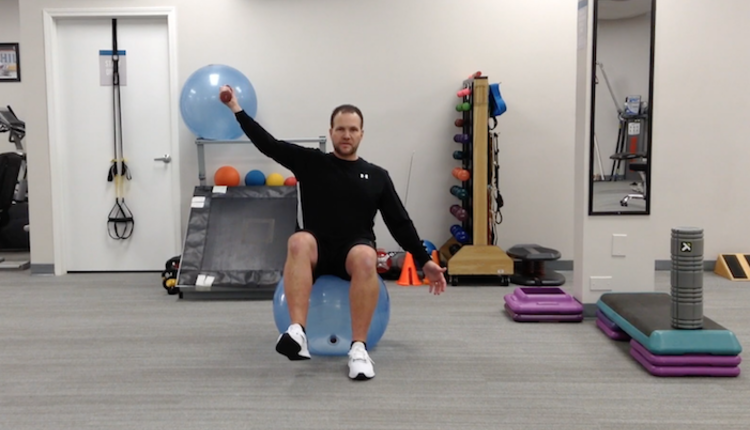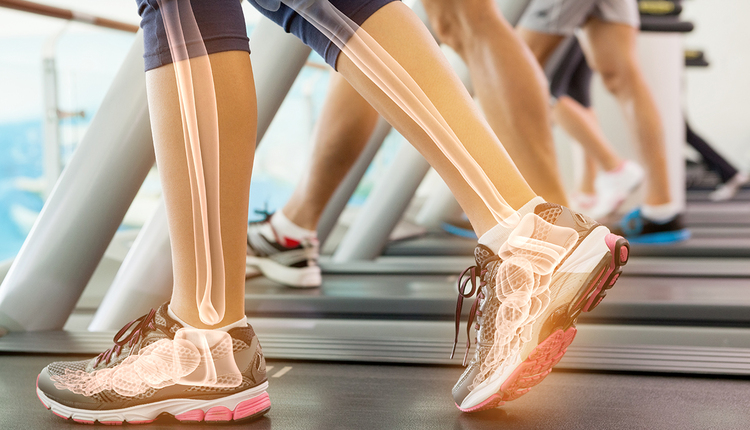Glenohumeral and scapular stability is important for those involved on overhead lifts, overhead sports and repetitive overhead activity. The ability to sustain pillar stability and resisted unwanted movement in the shoulder, torso and hips is also needed in sport and life. This exercise will target the rotator cuff, scapular stabilizers and the entire pillar as the body moves in a lateral fashion against upper body resistance.


Execution: Begin with a mini-band (lighter resistance) around the wrists in a tall plank position. The hands should be directly beneath the shoulders, with the hands and feet shoulder-width apart.
Actively engage the core musculature to lock in a neutral spine position and keep the chin in a neutral position with the eyes facing down to the floor. Next, slowly reach the left hand out toward 9 o’clock while moving the left foot simultaneously in a similar movement. Place the left hand and foot down, and then repeat the same sequence with the right hand and foot. Perform this sequence for about 5 steps to the left, and then repeat moving back to the right (3 o’clock position).
Perform 5 repetitions in each direction, and perform 2-3 sets. Keep in mind that the movements should be smaller and very deliberate at first to allow for optimal motor control and more symmetrical movement.
Progressions:
1. Increase time under tension by using a slower cadence
2. Increase the level of resistance
Regressions:
1. Reduce the resistance or perform without elastic resistance
2. Perform the exercise without resistance
3. Perform the exercise on the knees
Application: This exercise will promote shoulder, core and hip strength/stability. It can be particularly useful with shoulders that demonstrate unilateral and multi-directional laxity, whether congenital or acquired through injury or adaptive response in the face of stress (e.g. throwing, gymnastics, serving and swimming). Improving shoulder strength/stability along with pillar stability is essential for injury prevention and optimal movement for overhead athletes and those performing routine resistance training.
Additional notes:
Avoid moving too fast in order to limit loss of balance and stability, and be sure the client has prerequisite strength prior to adding resistance to the exercise.
















